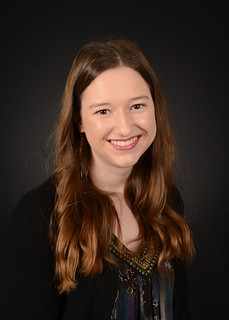
PREV ARTICLE
NEXT ARTICLE
FULL ISSUE
PREV FULL ISSUE
PAN CLARION INTERVIEWS LIANNA SPURRIERThe May 2021 issue of The Clarion (edited by Rich Jewell for the Pennsylvania Association of Numismatists) includes a nice interview with Lianna Spurrier. With permission, here's an excerpt. -Editor
When I was 11, my parents cleaned out a relative's house who was a hoarder. I got to go with them and was oddly excited about spending my Saturday's inside a musty old house with rubber gloves and face masks in August, but it was like a treasure hunt to me. We found a few little stashes of coins tucked away – a jar of wheat pennies here, a metal tin with a Seated Liberty half dollar there – and, since I already thought of myself as a coin collector, I asked to keep them. Pretty soon I had the wheat pennies sorted out by date and mint mark on our living room floor, telling anyone who would listen why the 1909 S VDB was so special. I was very invested in collecting for a few years until high school sucked up all my free time and replaced all of my hobbies with homework. Near the end of college, when I finally had time for hobbies again, I dove back in and have no intentions of leaving.
2. What are you currently collecting? In addition, I have a few cheaper, fun sets. I started a Dansco 7070 type set back in middle school, so I've been gradually filling that in. I also recently started a registry set of toned French Sower francs. When shows are happening, I have a Canadian type set and Fiji Dansco album that I fill in by hunting through bargain bins. I like to have multiple sets going at different price ranges. The general advice in the industry is to buy fewer, more expensive coins, which is valid; however, there's also a lot to be said for the fun sets. I started off by digging through bargain bins of wheat pennies at flea markets, and that's still one of my favorite things to do at shows. I'm a strong advocate that collections at all budgets are valid and worthwhile. 5. You're the ANA President, name one thing you would do to make coin collecting more attractive to young people? Man, that is the question, isn't it? I think one part of the equation that I haven't seen talked about much is putting more emphasis on cheap parts of the hobby. Let's talk about collecting a Dansco album of Jefferson nickels or a 20th century Canadian type set. As a kid, the fancy, high grade pieces were nice to look at, but for me, they were so far out of my budget that they lost my interest. I think any shop that's hoping to attract young people should have some of their cheaper inventory out and displayed right alongside the fancy pieces.
If I hadn't found Don's, with cases full of raw coins that were close to my price range,
there's no telling if I would have kept collecting. The fancy shops seemed to say to 11-year-old
me, Another aspect to that is making those same pieces a bit more glamorous. For example, if you have raw pieces in plastic flips, print off some nice labels for them instead of scribbling on bits of cardboard. I fully realize that's a large commitment of time, effort, and valuable display space, but if our goal is attracting younger people, we need to make their budgets feel legitimate. If it works, they'll eventually come back with more money and buy the fancier pieces. Translating that to what I could actually do if I were the ANA President, I would make attractive and editable flip labels easily available, and distribute guides to dealers regarding a recommended amount of coins under $100 or $50 to display. Pamphlets could also be distributed to dealers with introductions to inexpensive and accessible sets, so they can then give those to any young people who enter their shop. Great idea! Of course, it takes the same amount of time and money to prepare a $5 coin for sale as it does a $50 or $500 one, so dealers naturally focus on the higher end. But it makes perfect sense that more nicely packaged entry-level coins would be more attractive to new collectors. Every dealer would do themselves and the hobby at large a favor by devoting some TLC to some of the lower-priced material in their inventory. It just might inspire a new long-term customer. -Editor
For more information on PAN, see:
Wayne Homren, Editor The Numismatic Bibliomania Society is a non-profit organization promoting numismatic literature. See our web site at coinbooks.org. To submit items for publication in The E-Sylum, write to the Editor at this address: whomren@gmail.com To subscribe go to: https://my.binhost.com/lists/listinfo/esylum All Rights Reserved. NBS Home Page Contact the NBS webmaster 
|

